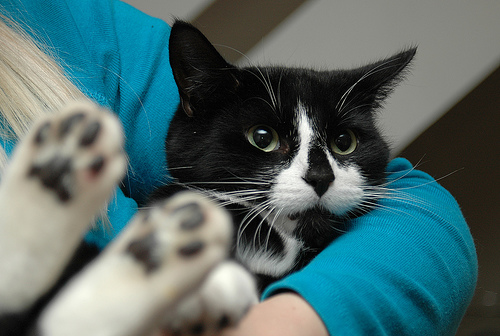
Common cat diseases and their signs
As with humans, there are many conditions that can be developed in cats. These can potentially be serious in nature, especially if left untreated. Here, we look at some of the most common cat diseases and how to know whether your pet may be displaying symptoms of them.
Kidney Disease
There are two types of kidney disease; one Acute Kidney Disease and the second which is Chronic Kidney Disease a longer, progressive disease.
Acute kidney disease is usually as a result of a sudden and severe or abrupt injury to the kidneys caused by an infection or a toxic substance (antifreeze). If this happens, your cat will quickly become very ill. They may be nauseous, dehydrated, lose their appetite, drink more and urinate in larger volumes. Acute kidney disease can be permanent but sometimes the damage can be reversed and treated depending on the cause.
Chronic kidney disease is when the kidneys slowly stop working. Because of the slow progression, the signs of chronic kidney disease are difficult to spot and by the time cats show any symptoms, the disease is quite advanced. The symptoms can include increased thirst and more frequent urination, drooling, dehydration, weight loss and bad breath. The disease is fairly common in older cats, so it’s a good idea to get your cat regularly checked by a vet if they are over the age of 7.
Upper Respiratory Infections (URIs)
Feline calicivirus and feline herpes are two examples of URIs that can affect cats. In multi-cat households, these can be easily spread between pets through shared water and food bowls, grooming and sneezing. Stress can also be a contributing factor in making some cats more susceptible to developing a URI. Cats with flat faces can also be more prone to them, such as Persian breeds. Typical symptoms include a runny nose, congestion, nasal discharge, fever, appetite loss and rapid breathing.
Feline Lower Urinary Tract Diseases
Problems with the lower urinary tract are often more prominent in cats who are overweight and inactive, along with those who eat a dry diet. Stress, changing routines and living in a multi-cat household can also increase the possibility of developing this condition. Symptoms depend on the nature of the disease but can include straining to urinate, bloody urine, inappropriate urination, crying when urinating, licking the urinary area, vomiting, dehydration and lack of appetite. Difficulty passing urine could be a serious sign of urinary tract disease so veterinary advice should be sought immediately.
Tapeworms
Tapeworms can live inside your cat’s intestines and are usually contracted after swallowing an infected flea. Symptoms depend on the nature of the disease but can include vomiting and weight loss. A more obvious indication of tapeworms can be seen in your cat’s faeces. If you notice white rice-like grains, this is probably a sign. Because tapeworms typically develop after swallowing fleas, it is also important to tackle any flea infestations as well as getting treatment for the tapeworm invasion.
Dental Disease
A build-up of plaque can lead to hard, brown tartar on the teeth and gum disease. If this is not treated, it can go on to damage the gums and tissue that support the teeth which can lead to infection pain and difficulty eating. It can therefore become a serious problem if your cat’s oral health is not adequately maintained. Your vet can regularly check your car’s teeth and if necessary, clean them to remove plaque and tartar.
[Photo Credits: minxlj]